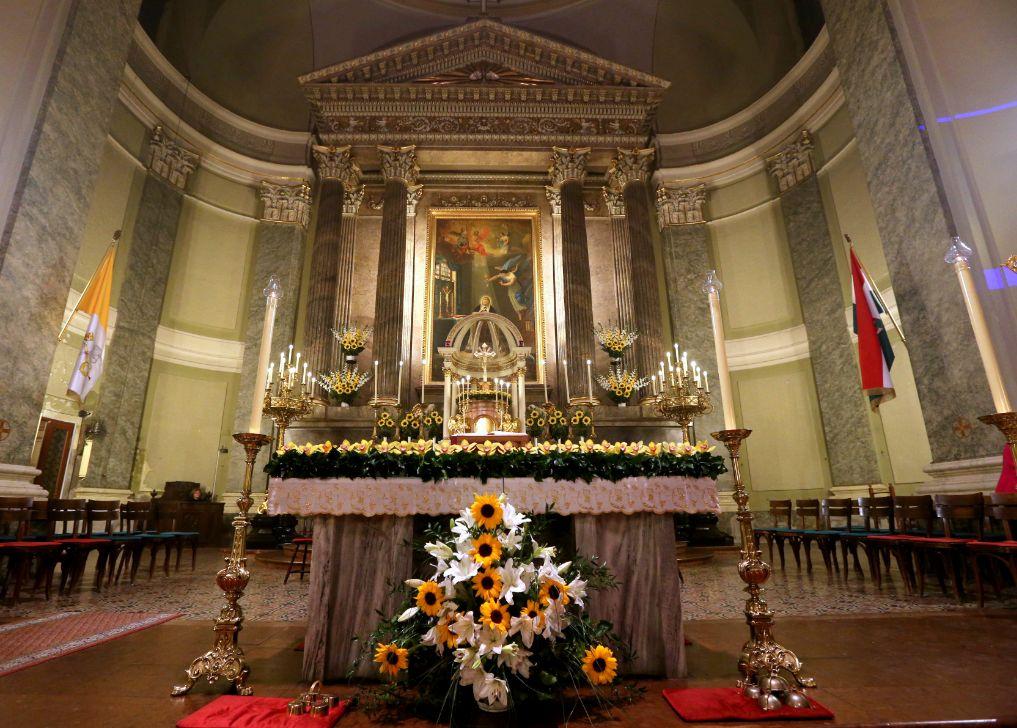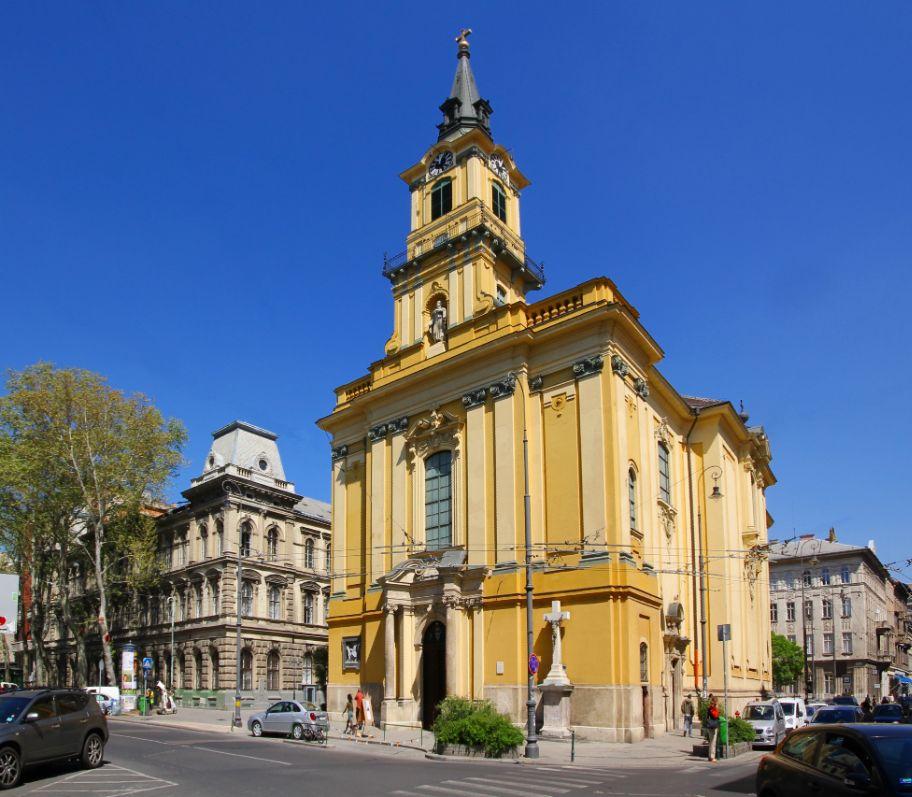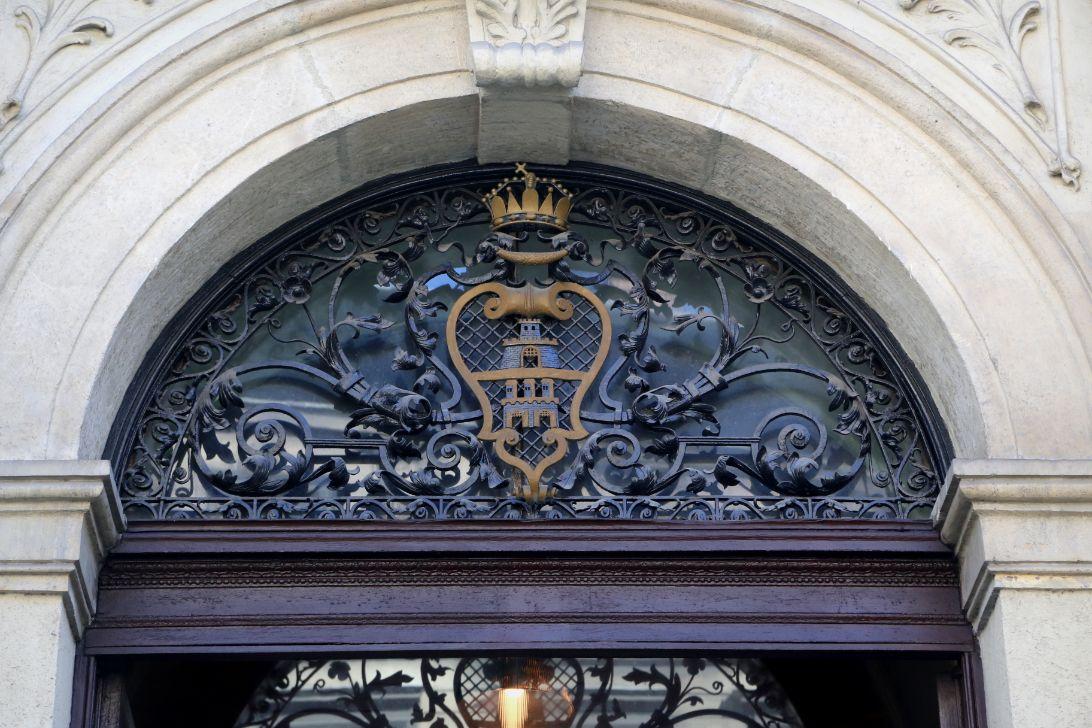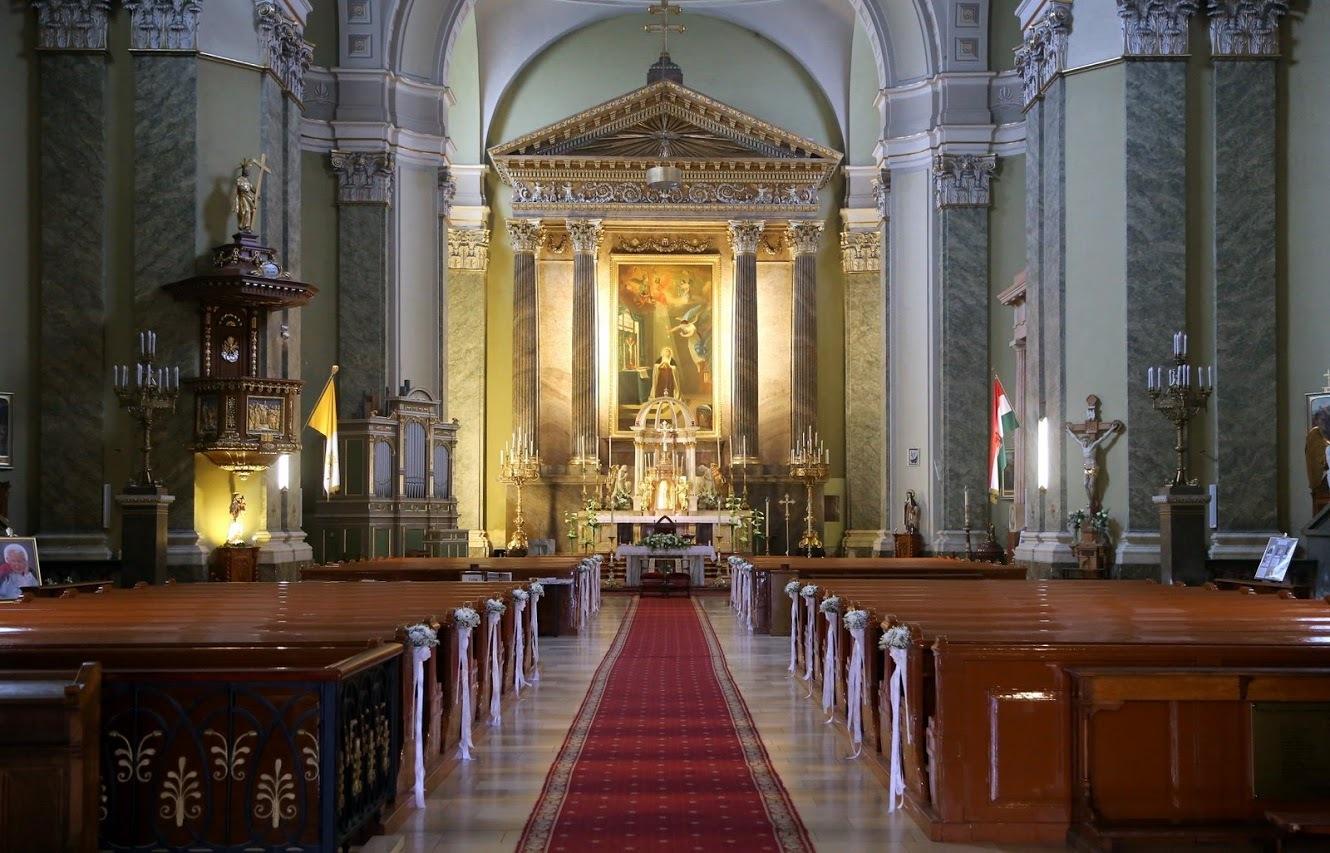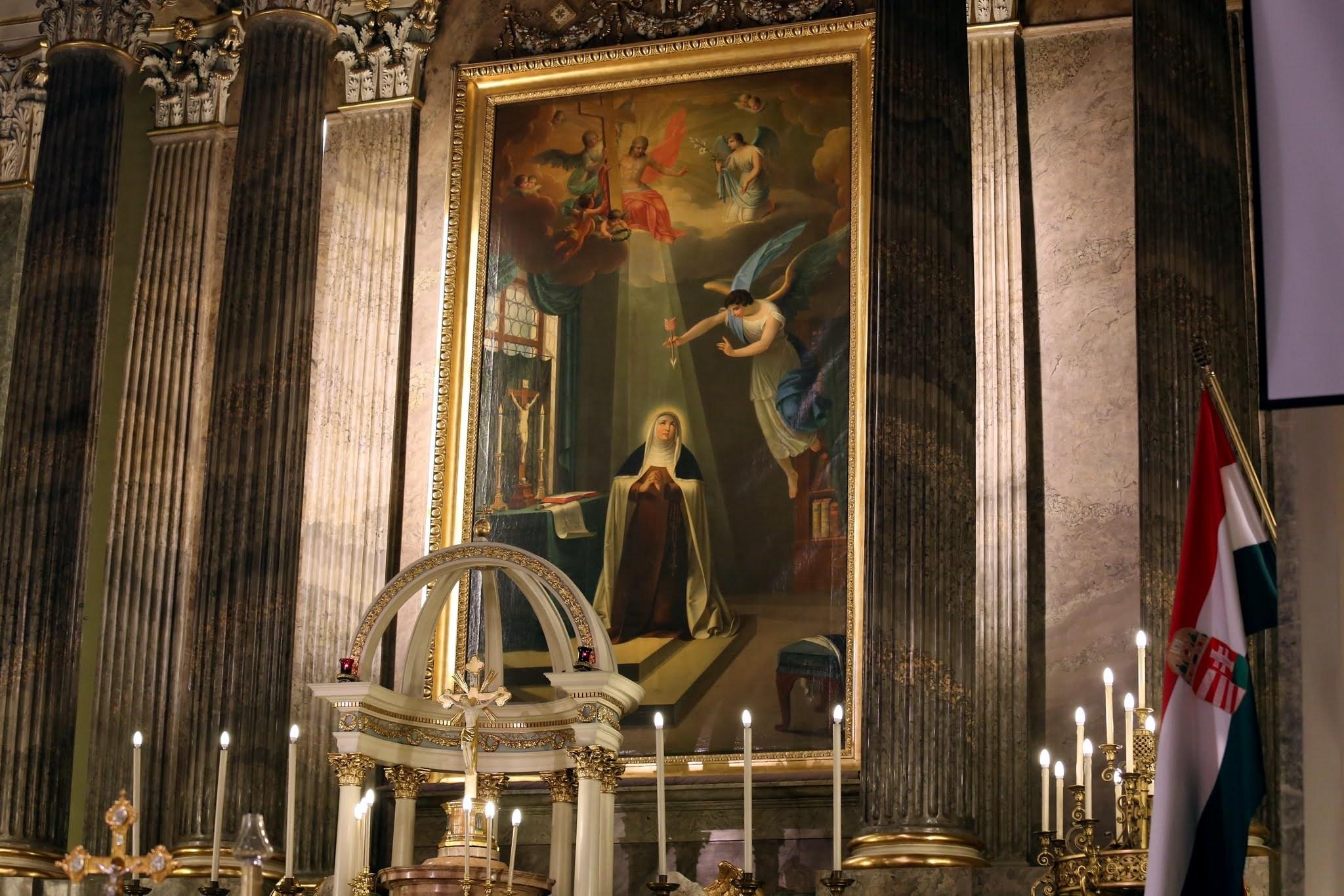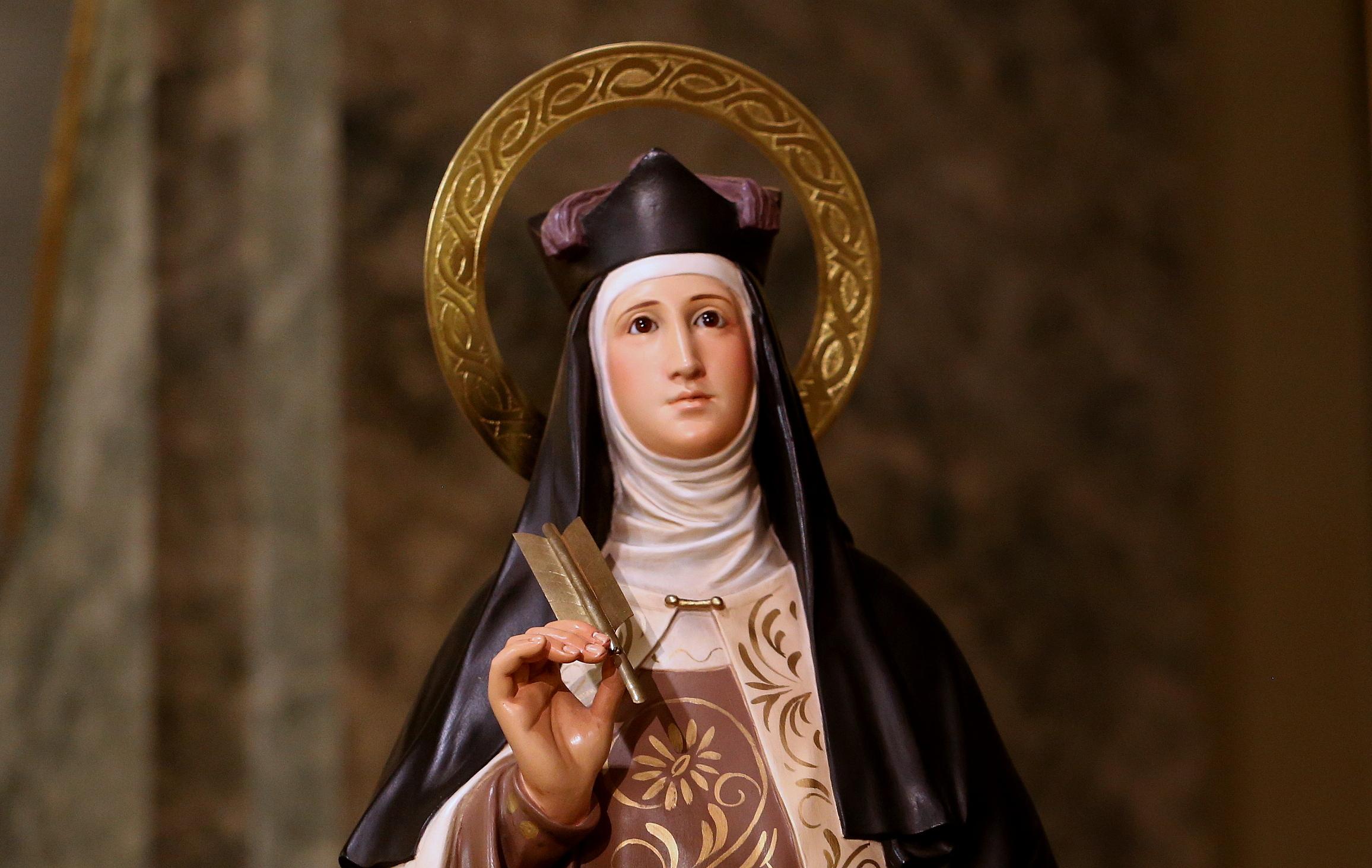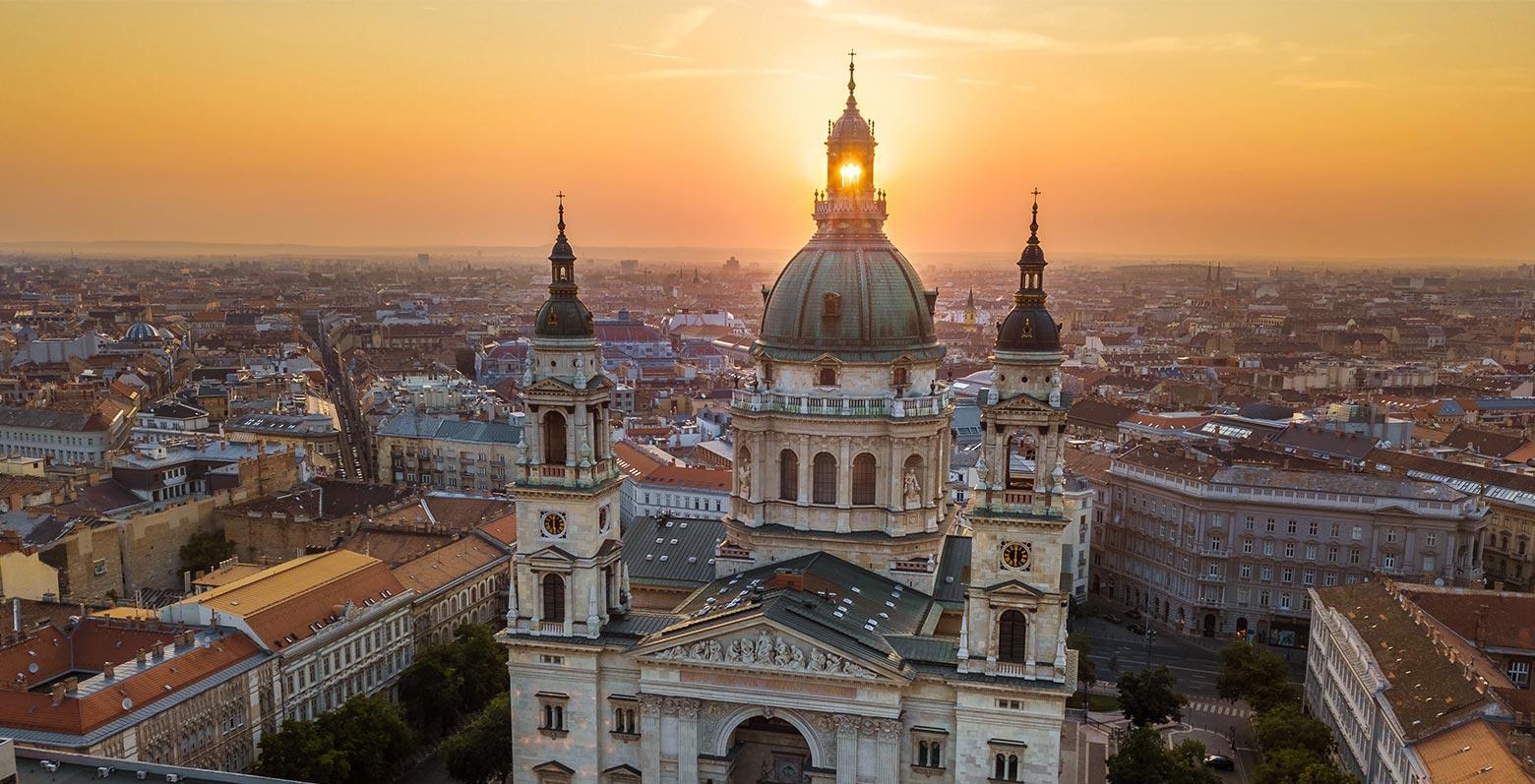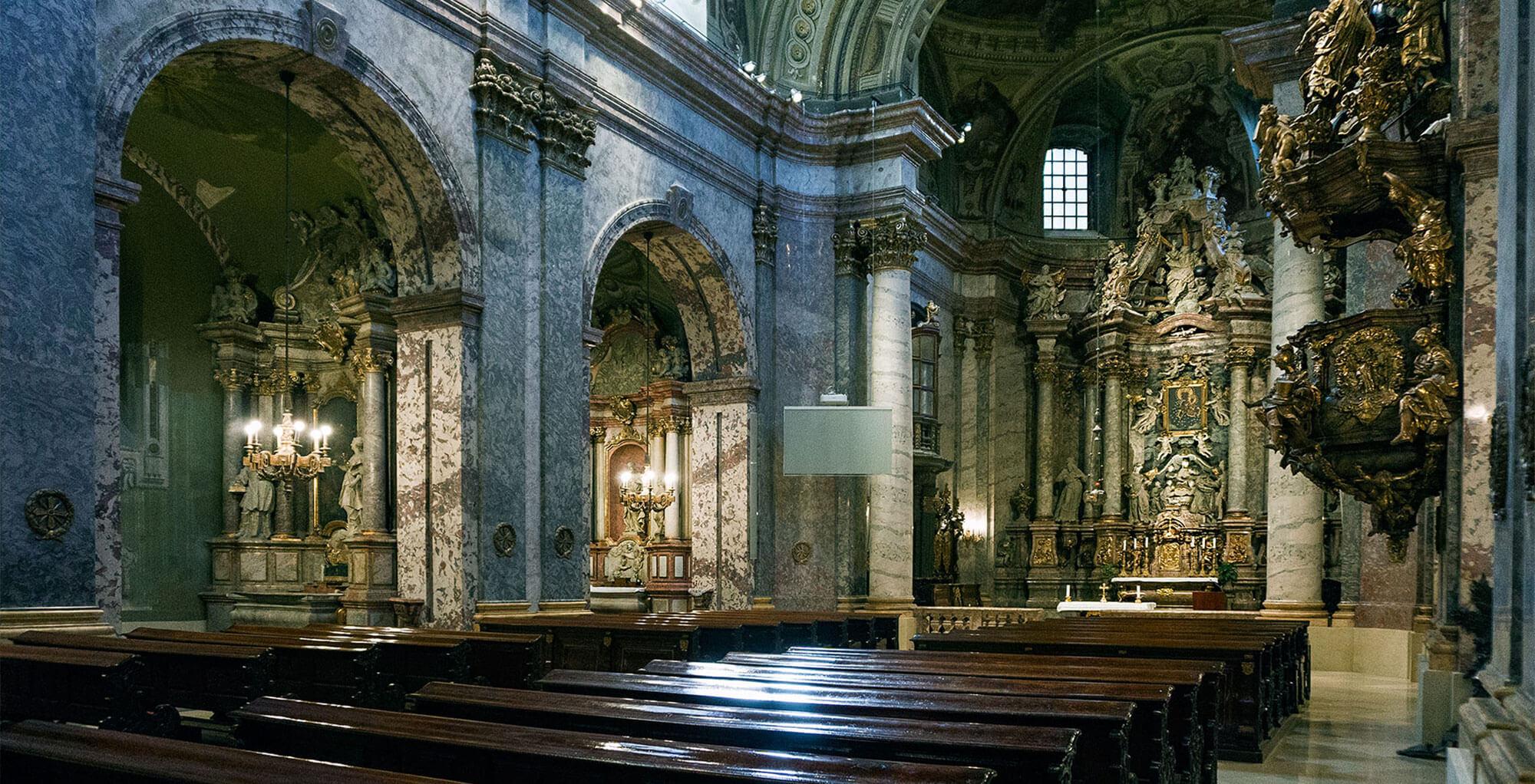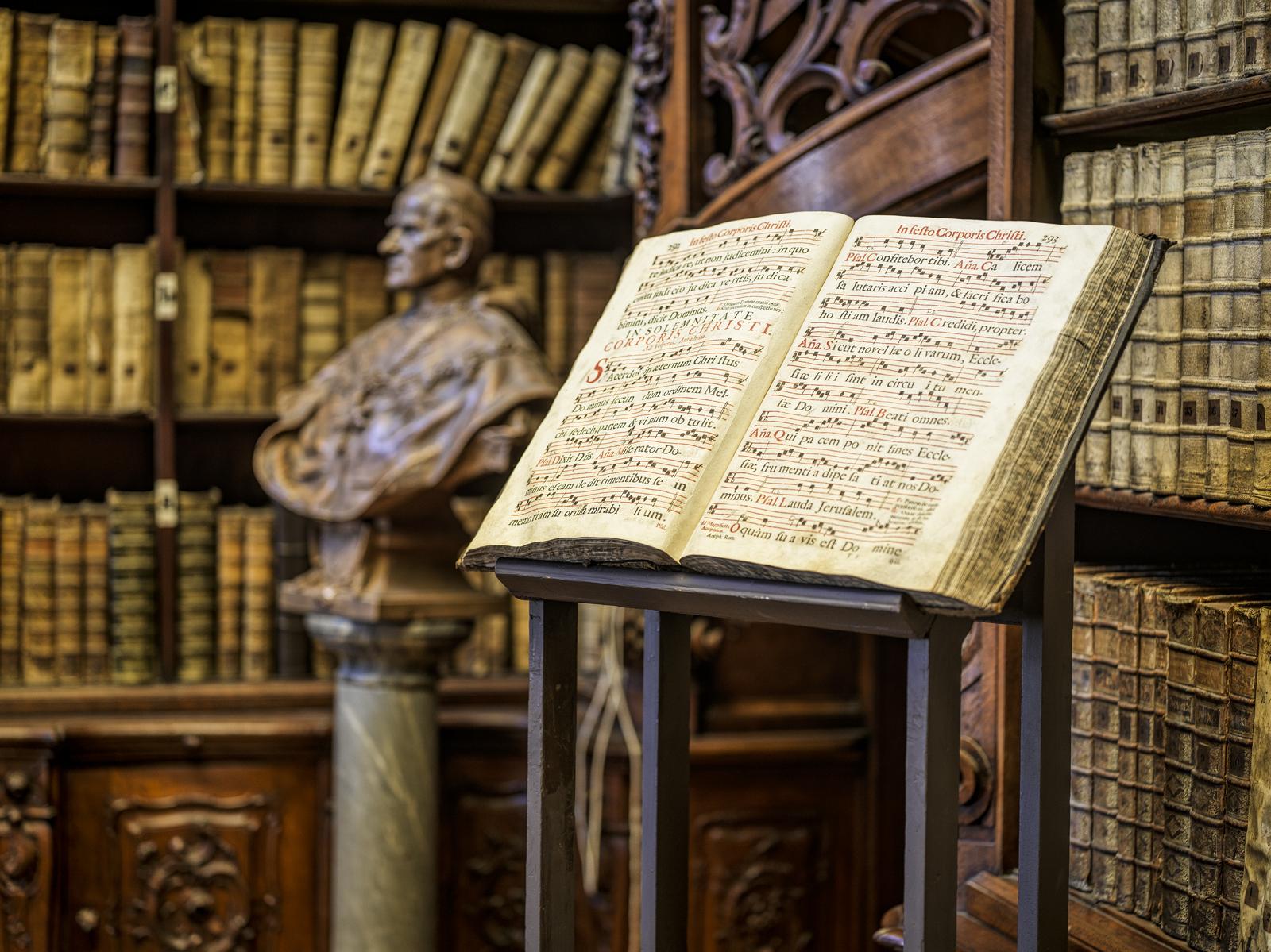St. Teresa of Ávila parish church is the oldest church in Terézváros. The chapel, originally made of wood, was built in 1777 and was surrounded mainly by ground-floor, village-style houses. In 1801, the construction of the church of the Holy Spirit began, based on the plans of Fidél Kasselik, and it is characterized by Baroque, Gothic and Classicist elements.
The first important changes to the exterior were made in 1811, when Lőrinc Dunaiszky created the statue of St. Teresa that adorns the façade of the church. In 1871, Miklós Ybl replaced the steeple’s spire with a peaked, ornate brass helmet, and the roof parts next to the steeple were replaced with balustrades and some vases. It is a rarity that a fire-watching balcony was built around the tower at a height of 30 m. However, the church's tower clock, which is still in use today, is mechanical (i.e. it has not been converted to electronic) and is almost unique in the capital. It also has a distinctive entrance.
The interior was designed by Mihály Pollack. Its most impressive feature is the monumental high altar with its tympanum. The main altarpiece is the work of József Schöfft and depicts the ecstasy of St. Teresa of Ávila, since in 1822 the title of the church was changed from Holy Spirit to St. Teresa by Prince Primate Sándor Rudnay. In 1900 the parish priest Vince Stíber had two ornate candelabra made for the high altar.
Another ornament of the church is the altar of St. Joseph, which was paired with the altar of St. Stephen. The altarpieces were also painted by József Schöfft. Their design differs in that the two sides of the St Stephen's altar are decorated with semi-recumbent female figures: allegories of Love and Hope, while the St Joseph's altar is surrounded by two kneeling angels. Next to them, the Moorish baptismal altar is the work of Mihály Pollack, who is also responsible for the restoration of the choir. Here you will find the new organ, built to celebrate the 120th anniversary of the church. The organ was built in 1890 by the Angster factory of Pécs, the most important Hungarian organ builder of the time. The church, however, has two organs, as since 2011 a Rieger, 9-stop, monument organ has been installed on the left side of the sanctuary.
An interesting feature of the church is a gilded wooden chandelier, which was formerly used in the ballroom of the former Vigadó and escaped the siege of Buda in 1849.
Since 1994, an urn crypt has been built under the sanctuary, and in 2004 it was extended to the part under the nave and the underfloor heating was completed.
Did you know?
After the Second World War, the parish priest Gyula Hévey hid the registers of Jewish baptisms during the war in a mortared doorway, which were accidentally found when the door was opened in 2006 during the renovation of the parish office. A memorial plaque on the parish wall commemorates the parish priest's lifesaving work.

